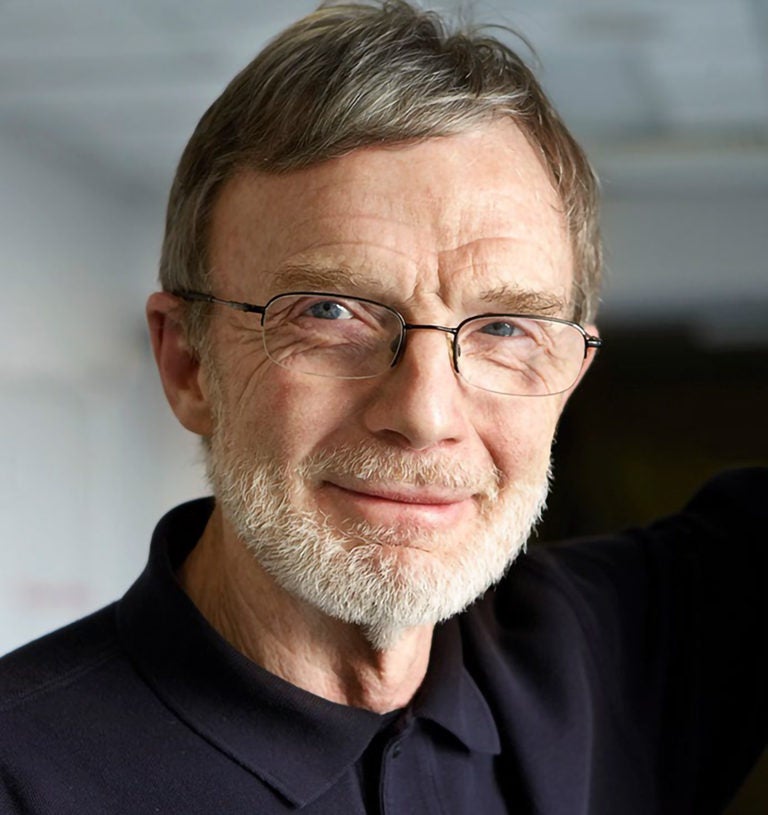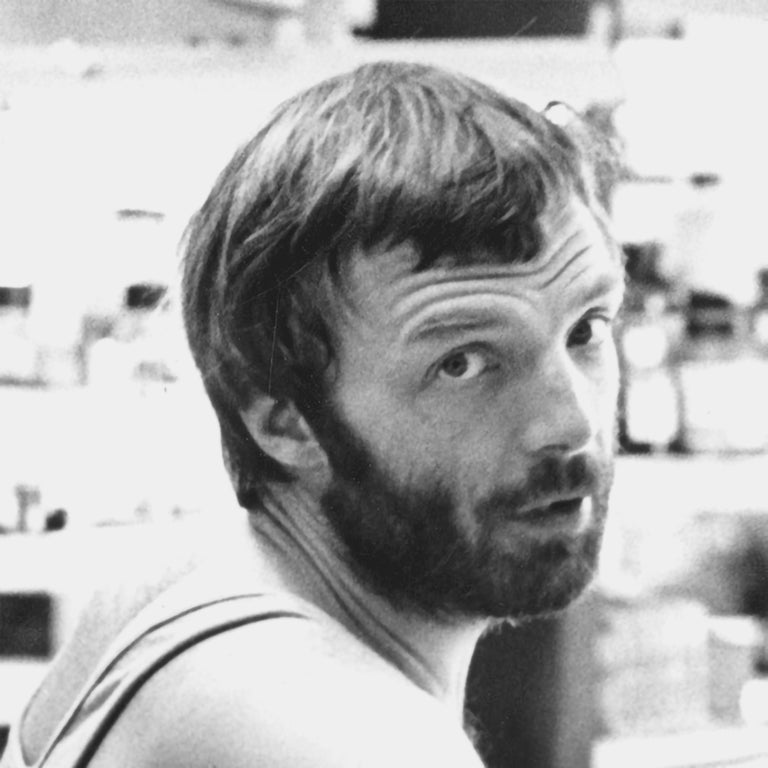Reprinted by permission from: Nature/Springer/Palgrave, Nature Structural & Molecular Biology 26, pages 846–847 (2019)
‘Joseph F. Sambrook (1939-2019)’ by Ashley Dunn, University of Melbourne, Parkville, Victoria, Australia, Ricky W. Johnstone, Cancer Centre, Melbourne, Victoria, Australia, Bruce Stillman, President & CEO, Cold Spring Harbor Laboratory.
Copyright 2019
It is impossible to measure just how big an impact Joseph (Joe) Sambrook had on the field of molecular biology. For almost 40 years, well-loved, dog-eared copies of his influential Molecular Cloning: A Laboratory Manual have been permanent fixtures in nearly every biology laboratory around the world. Colloquially known as the ‘cloning Bible’, its study has been a rite of passage for many researchers.

After completing his PhD in 1966, Sambrook returned to England, where he trained as a postdoctoral researcher with future Nobel Prize laureate Sydney Brenner at the Medical Research Council Laboratory of Molecular Biology in Cambridge. When he arrived, the genetic code had been completely solved, except for one codon: UGA. Within just a couple of years, Sambrook had determined that the function of UGA in Escherichia coli is in fact not to encode an amino acid; instead, it serves as a chain-terminating codon. With his findings published in Nature in 1967, the genetic code was finally complete, which helped to put Sambrook well and truly on the map as one of the most promising young molecular biologists of the time.
Sambrook started developing a keen interest in the role that viral genes can play in human disease, including cancer. In the late 1960s, the key to understanding the molecular basis of human cancer was, in the minds of many, the study of animal viruses proven to oncogenically transform cultured animal cells. Renato Dulbecco had recently shown that simian virus 40 (SV40) malignantly transforms cultured mammalian cells, work for which he would later be awarded a Nobel Prize. In 1967, Sambrook uprooted once again, this time to sunny California, to join Dulbecco at the Salk Institute. As a junior fellow working in Dulbecco’s laboratory, Sambrook demonstrated that transformed cells carried several copies of SV40 DNA and, notably, that the viral DNA was integrated into the genome of the host cell.

Sambrook’s other achievements during his time at CSHL include the first use of restriction-enzyme polymorphisms as genetic markers, elucidating the mechanisms by which SV40 and adenoviruses integrate into the genome, and deciphering the patterns of transcription and post-transcriptional processing of mRNA. He was also the first to develop and exploit the value of using ethidium bromide to stain agarose gels containing DNA fragments generated by cleavage with newly discovered restriction enzymes.
It was also during his tenure at CSHL that the seed was sown for the legendary Molecular Cloning manual. Sambrook, with colleagues Edward Fritsch and Tom Maniatis, had started a ‘how to clone’ course to teach the basics of molecular biology to their visiting scientists. Sambrook was a gifted and enthusiastic writer. He commandeered in turn Maniatis, Fritsch, David Russell and Michael Green to produce, through four iterations, the nucleic acid–centric instruction manual Molecular Cloning. These volumes served as a foundation stone for the growth of CSHL Press and remain to this day the most popular and influential laboratory manuals ever produced.
In 1977, Sambrook was appointed Assistant Director of CSHL. Sambrook’s personal style of leadership was renowned, as was his increasingly formidable scientific reputation. He was fiercely combative with anyone prepared to engage in intellectual jousting. His nose-to-nose style could be quite confrontational and intimidating, particularly to newcomers, although at heart everyone suspected it was good-natured and just ‘Joe being Joe’! Indeed, behind his sometimes harsh bark was an unquestionable intent to help others. Always generous with his time, Sambrook would give intense thought to a researcher’s work and provide valuable updates and encouragement to keep going. He did this with good humor and a twinkle in his eye, as he loved to surprise. Sambrook taught his post-doctoral fellows to immerse themselves in their projects, to avoid the trap of following the pack and to believe in themselves. Such was his impact at CSHL that when he left in 1985, a newly constructed research building was named The Joseph F. Sambrook Laboratory in appreciation of his contributions to the institution.

In 1991, Sambrook became Director of the Eugene McDermott Center for Human Growth and Development at the University of Texas Southwestern Medical Center, before he was recruited back to Australia in late 1994 to join the Peter MacCallum Cancer Centre (‘Peter Mac’) in Melbourne, as Director of Research. In just 5 short years, Sambrook completely revolutionized the research enterprise at Peter Mac, instituting an unflinching requirement for research excellence and a culture of collegiality that permeated the organization. Through astute recruitment, he almost tripled Peter Mac’s laboratory research workforce, from 75 to over 200, and set in place a research direction and strategy that grew in size, scope and impact under his dynamic direction. Sambrook founded and directed the Kathleen Cunningham Consortium for Research into Familial Breast Cancer, the first ever clinical cohort of its kind. It brought together experts from across clinical streams who work together to create a resource to solve pressing clinical, genetic and epidemiological problems of familial breast and ovarian cancer, a project that he was deeply passionate about. He was also one of two founding directors of Cancer 2015, a multi-year, large-scale program, funded by The Government of Victoria, on the personalized treatment of cancer.
Among his many honors, Sambrook was an elected Fellow of The Royal Society (1985), an elected Fellow of the Australian Academy of Science (1999), a Peter Mac Distinguished Fellow in Cancer Research and the recipient of honorary doctorates from the University of Liverpool and the Watson School of Biological Sciences at CSHL.
However, Sambrook’s legacy extends far beyond his own personal achievements. Not only was he a giant in the field of molecular biology, but also he and his wife and long-time collaborator Gething were true trailblazers in their characterization of molecular chaperones and the unfolded protein response, studies that formed the foundation for a whole new field of biology. Sambrook took great pride in seeing those he had mentored achieve international recognition, and those who worked with him feel very privileged to have been part of his exceptional life.
After a long illness, Joe died peacefully at home on 14 June 2019, with Gething and their daughter Honor at his side. He also leaves behind three children from his first marriage, to Thelma, eight grandchildren and countless scientists who were blessed by the aura of this giant of molecular biology.
Consistent with his lifelong love of music, Sambrook, along with Gething, established the ongoing Joseph Sambrook Opera Scholarship program using some of their royalties from the sales of tPA. On 14 July 2019, two of the recipients of the scholarships sang at a ‘Concert for Joe’, a fitting send-off in lieu of the traditional funeral that he expressly did not want.